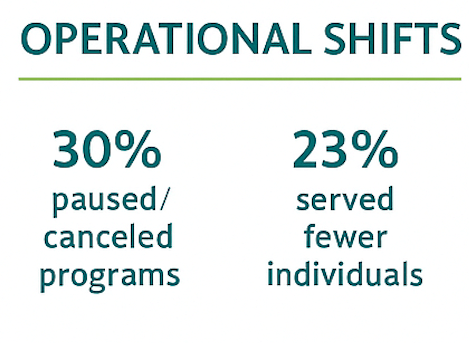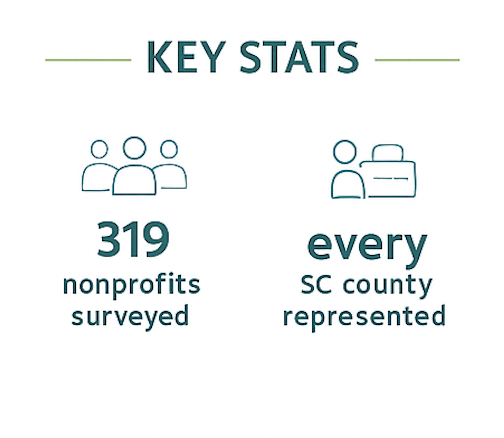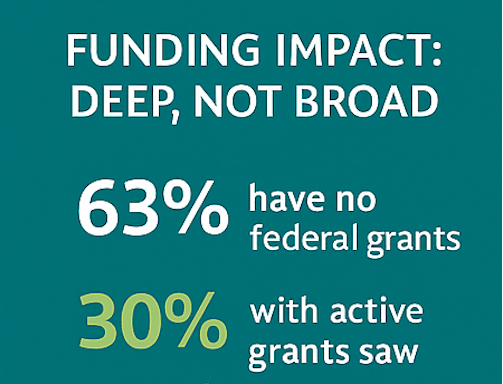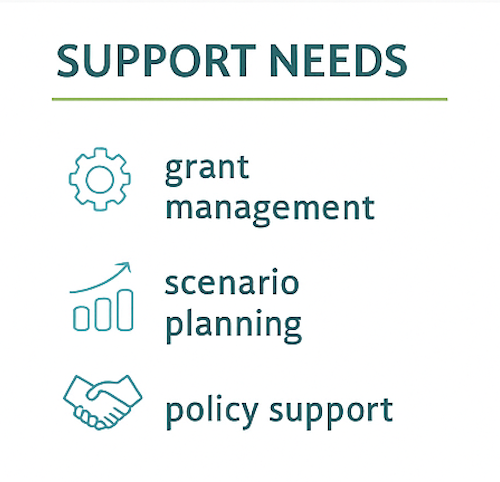Federal Pulse Poll: How Federal Policy is Impacting SC Nonprofits
The federal policy landscape continues to shift, impacting nonprofit organizations across the state.
For the second time this year, Together SC is issuing a Pulse Poll on Federal Policy Impacts to gather greater insight into how these federal shifts are changing how nonprofits operate.
In conjunction with the SC Grantmakers Network, Together SC invites any South Carolina registered nonprofit organization to complete our Pulse Poll now through November 24.
This data collected will be used to help inform Together SC's public policy work and mold various supports our sector needs to navigate this landscape in the coming months.
Note: Together SC will send reminders across multiple channels over the coming weeks. Please submit only one survey response per organization.
At a Glance
Together SC, in partnership with the SC Grantmakers Network, surveyed nonprofits across the state to understand how federal policies and funding shifts are impacting their work.
-
319 participating organizations
-
Every county in SC represented
-
Nearly all major funders included
Key Takeaways
1. Funding Impact: Deep, Not Broad
While most nonprofits don’t hold active federal grants, those who do — and experience funding disruptions — are deeply affected.
-
63% of respondents have no active federal grants
-
Of those with active grants:
-
70% said their funding has not been paused or canceled
-
30% reported lost or frozen funding ranging from $7,500 to over $1 million
-
Those affected rely more heavily on public funding (52% of total income)
-
2. Operational Shifts Are Widespread
Even nonprofits not receiving federal dollars are adapting their services and staffing due to federal policy changes.
Top reported changes:
-
❌ Paused or canceled programs – 30% of orgs
-
💸 Loss of funding – 29%
-
✍️ Adjusted program language – 23%
-
📉 Reduced services – 23%
-
👥 Served fewer individuals – 23%
-
🧑💼 Positions terminated – 14%
3. Planning Ahead with Caution
The sector is bracing for more challenges:
-
49% of nonprofits are planning for or expecting negative impacts in the next 6 months
-
33% anticipate neutral outcomes
4. Support Needs Go Beyond Funding
Nonprofits are looking for help beyond dollars—they want training and support to strengthen their operations.
Top areas where nonprofits want support:
| Support Area | % of Respondents |
|---|---|
| Grant Management | 38% |
| Scenario Planning | 34% |
| Financial Management | 30% |
| Public Policy Training | 30% |
| Program Evaluation | 25% |
| Internship Programs | 21% |
| Board Governance | 18% |
Why This Matters
Federal decisions are shaping the future of South Carolina’s nonprofit sector in complex and far-reaching ways.
Together SC is committed to amplifying your voices, sharing your stories, and ensuring our sector is equipped to thrive—no matter what comes next.
Want to Get Involved?
Contact:
GP McLeer
Director of Public Policy & Community Engagement
📧 gp@togethersc.org



